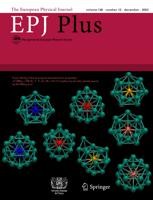Readying photoacoustic spectroscopy for studies of advanced nanostructures
Innovations to the existing photoacoustic spectroscopy setup could make the technique far better suited to studying advanced, specially engineered nanostructures
New York | Heidelberg, 22 August 2025
 When a material sample absorbs light, its resulting thermal expansion can generate an acoustic wave in the surrounding air. Named the photoacoustic effect, this phenomenon is now widely exploited in experimental physics to measure the wavelengths absorbed by materials via the sound waves they emit. This technique is called photoacoustic spectroscopy (PAS), and has now been applied across fields from gas sensing and biomedical imaging to observations of ultrafast reactions. So far, however, PAS has proven less reliable when studying photoacoustic responses in specially engineered nanostructures.
When a material sample absorbs light, its resulting thermal expansion can generate an acoustic wave in the surrounding air. Named the photoacoustic effect, this phenomenon is now widely exploited in experimental physics to measure the wavelengths absorbed by materials via the sound waves they emit. This technique is called photoacoustic spectroscopy (PAS), and has now been applied across fields from gas sensing and biomedical imaging to observations of ultrafast reactions. So far, however, PAS has proven less reliable when studying photoacoustic responses in specially engineered nanostructures.
Through new research published in EPJ Plus, Emilija Petronijevic and colleagues at Sapienza University of Rome introduce several improvements to the PAS setup, making it better suited to measuring intricate nanoscale structures. Their innovations could lead to powerful new methods for measuring features like single and aggregated nanoparticles, ultra-thin films and metasurfaces, and nanowire assemblies – currently at the leading edge of experimental physics.
PAS offers a low-cost, highly sensitive technique for characterising samples without the need for complex post-processing. Ideally, it can probe a wide variety of properties – including spectral and spatial variations in absorbed light, as well as the impact of varying polarisations. For advanced nanostructures, however, existing PAS setups aren’t well suited to investigating multiple photoacoustic parameters simultaneously.
In their study, Petronijevic’s team addressed these limitations through a series of innovations to the PAS setup. They began with a broadly tuneable laser with a mechanically modulated intensity, which they then integrated with a linear polariser and waveplate, allowing precise control over the polarisation of light reaching the sample. In addition, they added mechanical stages to fine-tune the angle at which the laser beam strikes the sample.
With this highly tuneable setup, the researchers could map absorption spatially and spectrally, while tightly controlling polarisation, angle of incidence, modulation frequency, and beam diameter. They are now confident their improved setup will enable PAS across a broader range of materials – potentially unlocking new insights into the properties of advanced nanostructures.
References: Petronijevic, E., Leahu, G., Skubisz, C. et al. Listening to nanostructures’ absorption with many degrees of freedom: widely tunable photo-acoustic characterization. Eur. Phys. J. Plus 140, 613 (2025). https://doi.org/10.1140/epjp/s13360-025-06578-5
Further Information
For more information visit: www.epj.org
Services for Journalists
The full-text article is available here.
Contact
Sabine Lehr | Springer | Physics Editorial Department
tel +49-6221-487-8336 | sabine.lehr@springer.com
